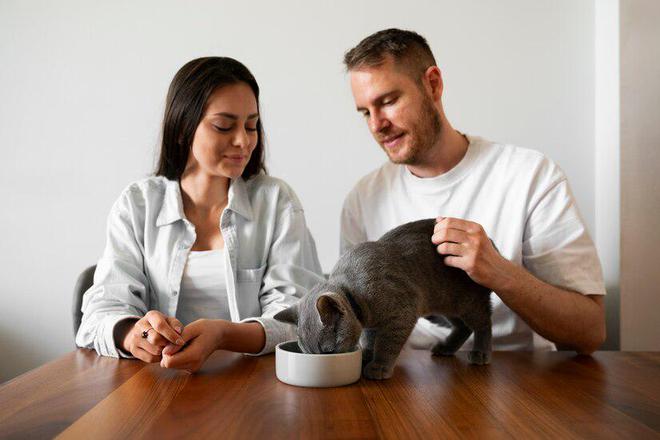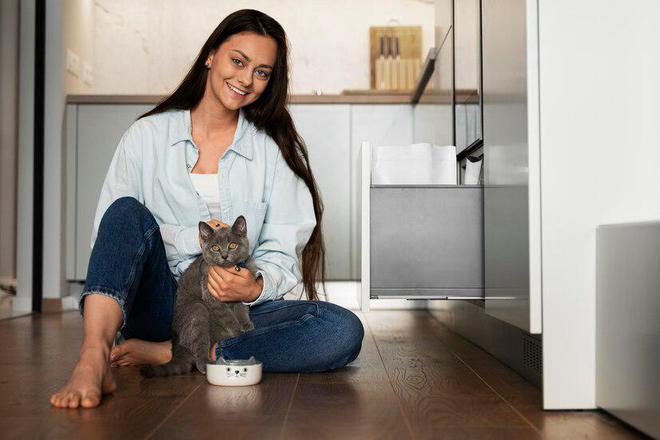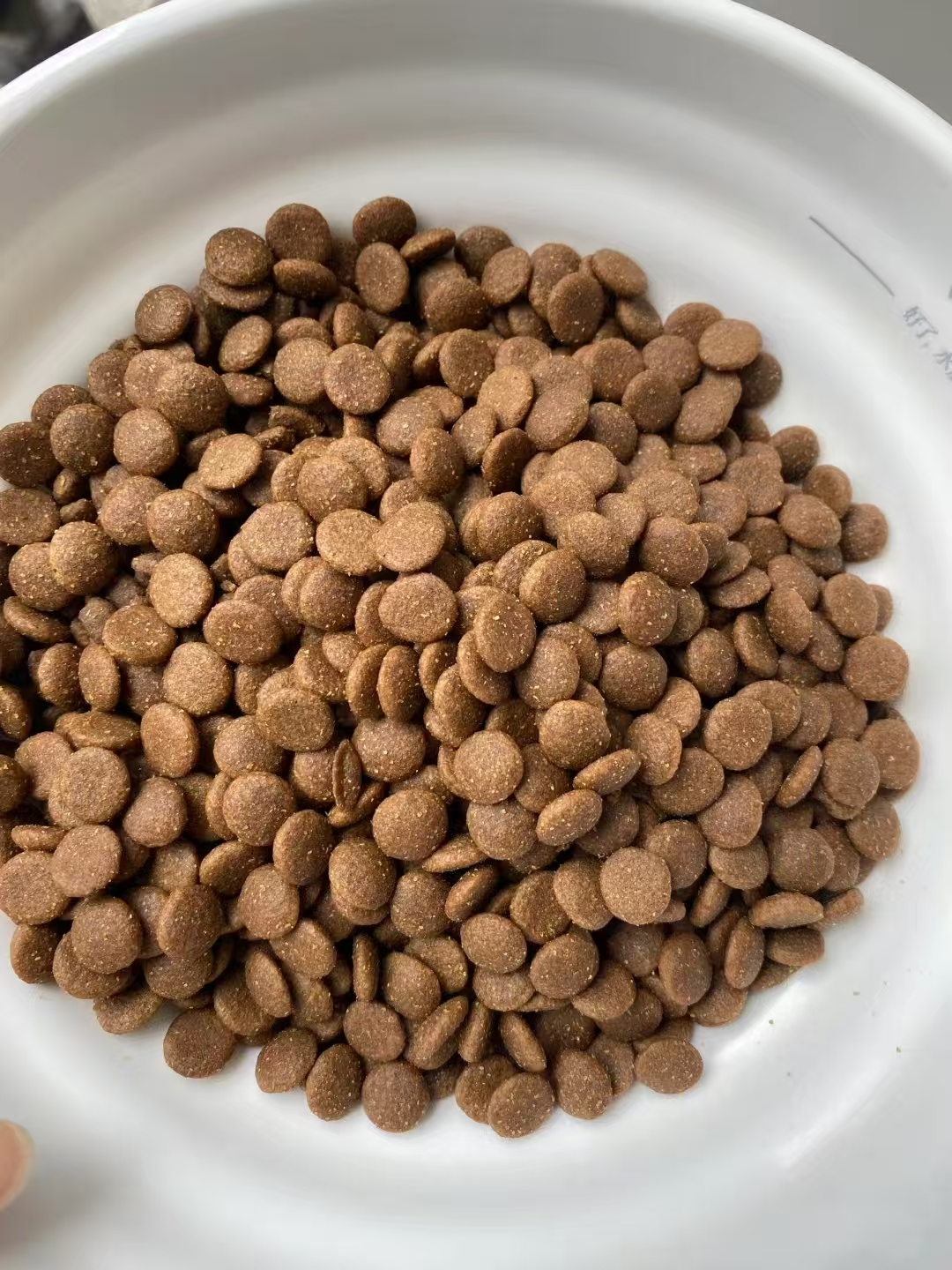
Freeze dried cat food is becoming increasingly popular in the pet food market. But how is it made? What potential effects does it have on your cat’s health? And as cat parents, how can we strike a balance between delicious food and optimal health? Let’s explore these questions together.

What Is Freeze Dried Cat Food?
Freeze dried cat food is made using a “freeze-drying” process. Fresh ingredients such as meat, organs, and vegetables are frozen at low temperatures and then dehydrated in a vacuum environment, resulting in food with extremely low moisture content (2%-4%).
This process retains the nutrients and natural flavors of the ingredients while significantly extending shelf life. Though it may look dry and shrunken, freeze dried food is packed with “essence.”
When I first fed freeze dried food to my cat, she immediately loved it and gobbled it up. But as a careful cat parent, I started wondering: Is eating such dry food entirely harmless for her health?
Does this question resonate with you too? Is freeze dried food suitable for every cat? And if cats prefer this texture but don’t drink enough water, what could happen?

How Does the Moisture Content in Freeze Dried Food Affect Cats?
1. Changes in Water Needs
Freeze dried cat food contains very little water, while cats are naturally “low water drinkers” who don’t instinctively drink as much water as they need. Without additional hydration, eating freeze dried food could lead to dehydration, potentially impacting kidney health.
When I introduced freeze dried food to my cat, I noticed she started drinking more water, which made me realize the importance of ensuring her hydration. To encourage her, I bought an automatic water fountain and placed water bowls around the house to increase her drinking opportunities.
2. Urine Concentration and Urinary Health
Insufficient water intake can result in more concentrated urine, increasing the risk of urinary tract issues such as bladder stones and infections. Male cats, in particular, are more vulnerable due to their narrower urethras.
I once had a scare when I noticed my cat’s urine was darker and in smaller quantities. A quick visit to the vet confirmed that she wasn’t drinking enough water. The vet advised me to mix freeze dried food with wet food and monitor her water intake, which successfully resolved the issue.
This made me wonder: Should the popularity of pet food trends be guided more by scientific evidence? And as pet owners, should we adapt our choices based on our cat’s individual needs?
3. Digestive Issues and Constipation
If cats eat freeze dried food without adequate water intake, their intestinal movements may slow down, leading to constipation. Chronic constipation can cause discomfort and may negatively impact overall metabolism.
My cat once experienced constipation for several days, struggling painfully in her litter box. I realized it was due to insufficient hydration. Since then, I’ve been soaking freeze dried food in warm water or mixing it with wet food, which has significantly improved her digestion.
Reflection: Does the convenience and high nutrition of freeze dried food require more deliberate feeding practices? Should we, as cat parents, intervene more actively in shaping their dietary habits?

How to Feed Freeze Dried Food Scientifically
1. Increase Water Intake
- Running Water Method: Use an automatic water fountain, as cats are naturally drawn to flowing water.
- Multiple Locations: Place water bowls in various spots around the house for easy access.
- Hydration Boosting: Add warm water to freeze dried food to rehydrate it, enhancing both nutrition and moisture.
2. Combine with Wet Food
- Mix It Up: Combine freeze dried food with wet food to balance nutrition and hydration.
- Soften the Food: Soak freeze dried food in warm water before feeding to increase its water content and make it easier for your cat to chew and digest.
3. Regular Health Monitoring
- Check your cat’s urine and stool regularly, especially if they are naturally low water drinkers.
- Take your cat for annual health check-ups to monitor kidney, bladder, and digestive health.
Reflecting: Is Freeze Dried Food Suitable for All Cats?
While freeze dried cat food is nutritious and convenient, is it suitable for every cat? Cats that already drink very little water or are prone to urinary and digestive issues may not benefit from a diet that is too dry.
As consumers, should we be more rational about pet food trends? Behind the popularity of any product, it’s crucial to understand its production process, nutritional content, and long-term impact on pets, rather than blindly following the hype.
Conclusion: Balancing Taste and Health
While freeze dried cat food is tasty and nutritious, its low moisture content requires us to pay extra attention to our cats’ hydration needs. By encouraging more water intake, adjusting dietary structures, and scheduling regular health check-ups, we can let our cats enjoy the deliciousness of freeze-dried food while staying healthy and active.
As guardians of our cats’ well-being, we must focus on every small detail in their diet and health, providing them with a more scientific and holistic approach to care.
What do you think? Would you adjust your cat’s diet based on their eating habits? Does your cat enjoy freeze-dried food? Share your feeding tips and experiences below!







